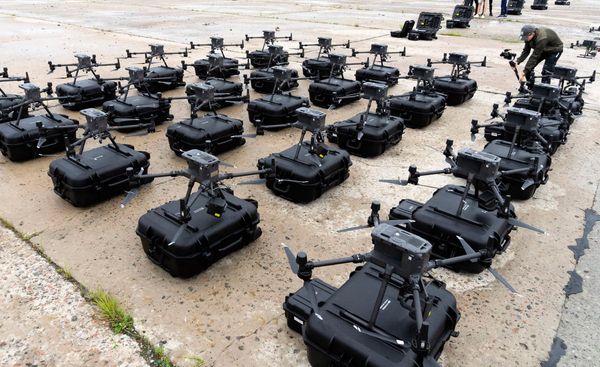
By Roy Chun Lee, Chung-Hua Institution for Economic Research
It has been another challenging year for Taiwan filled with both excitement and concern. Two key factors that shaped the development of 2019 were the U.S.–China trade war and the upcoming Taiwan presidential election.
In terms of economic performance, the Chung-Hua Institution for Economic Research (CIER) forecasts Taiwan’s GDP growth to be one of the highest in the East Asian region, reaching 2.33 percent. While trade performance has declined throughout the year, domestic investment in the manufacturing sector has soared to a historic high, contributing to GDP growth. This outcome can be partly attributed to the U.S.–China trade war. The surge of investment is mainly underpinned by the homecoming of Taiwanese original equipment manufacturing (OEM) companies — that previously used China as their production base — trying to circumvent tariffs for their U.S. clients.
According to government figures, committed investment reached US$27 billion as of December, with US$8.7 billion already realized. Around 70 percent of this investment is in the information and communication technologies (ICT) sector, followed by electronic machinery, consumer products, and chemicals. With the effect of creating job opportunities as well as new dynamics for economic activities, short-term prospects are looking positive for 2020.
The upcoming 2020 presidential election has prompted the government to accelerate major decisions on public investment, including the extension of the high-speed rail system to cities that were previously considered economically unviable. But many critics question the feasibility and worry over the lack of transparent impact assessment processes.
Another significant development is the structural change taking place in trade and investment. Taiwan’s overall export growth stands at –3.4 percent as of October 2019, with exports to the United States increasing by over 23 percent and exports to China declining by 32 percent. By year’s end, the U.S. is expected to surpass ASEAN to become Taiwan’s second-largest trade partner behind China. Investment to China — which historically dominated Taiwan’s outbound investment — declined by over 50 percent by November compared to the same period in 2018, and investment into ICT manufacturing dropped by over 90 percent.
From a strategic perspective, many have an interest in this outcome as it implies a re-balancing of Taiwan’s economic relationship with China by reducing the level of dependence and integration with the Chinese economy — a long-time goal of the current government.
But re-balancing also bears economic costs: re-configuration of the supply network impacts not only the movement of capital and manufacturing equipment but also workers and suppliers. While Taiwan is the preferred location for many Taiwanese OEM firms, the relatively high cost of production means that India, Vietnam, Thailand, Malaysia, and other ASEAN countries are often the only feasible option. Incomplete supply chains and a lack of qualified workers remain top concerns for many Taiwan businesses.
The rejuvenated trade relationship with the U.S. is also not all good news. Taiwan’s trade surplus with the U.S. reached US$170 billion in October 2019, suggesting that the US$200 billion trade surplus threshold will be surpassed by the end of the year without difficulty. This is one of the thresholds that the U.S. uses to classify states as potential currency manipulators. Taiwan already exceeds the other threshold — as the current account surplus is more than 2 percent of GDP — so the risk for Taiwan to be designated a currency manipulator is increasing.
Nevertheless, the Taiwan–US relationship improved significantly in 2019. The Taiwan Travel Act that allows bilateral high-level official visits between the U.S. and Taiwan came into force in 2018. Both the U.S. House of Representatives and the Senate subsequently passed the Taiwan Allies International Protection and Enhancement Initiative Act of 2019 that instructs the U.S. government to facilitate Taiwan’s meaningful international participation, including in the U.S. Indo-Pacific Strategy.
These developments, in addition to other initiatives, fractured Taiwan–China relations. The Hong Kong protests have seriously undermined the value and credibility of the "One China, Two Systems" policy that China has espoused. According to Taiwan’s official Mainland Affairs Council’s latest survey in October, over 89 percent of the population is against this framework in defining the future of cross-strait relations. The China spy story that recently appeared on Australia’s 60 Minutes program added further fuel to the fire.
2019 has been a critical year for Taiwan in many regards. It could be the beginning of a permanent restructuring of the Asia Pacific supply network. It could also be the beginning of the end of the economic integration between Taiwan and China that has persisted for the past 25 years. Cross-strait relations could also begin to be redefined. But there are still many uncertainties clouding the decisions regarding the future of Taiwan. Whoever becomes the next president in January 2020 will certainly face a challenging job.
The News Lens has been authorized to republish this article from East Asia Forum. East Asia Forum is a platform for analysis and research on politics, economics, business, law, security, international relations and society relevant to public policy, centered on the Asia Pacific region.
READ NEXT: How Rich Is Taiwan Anyway? Analyzing the Economy Under Tsai Ing-wen
TNL Editor: Daphne K. Lee (@thenewslensintl)
If you enjoyed this article and want to receive more story updates in your news feed, please be sure to follow our Facebook.







